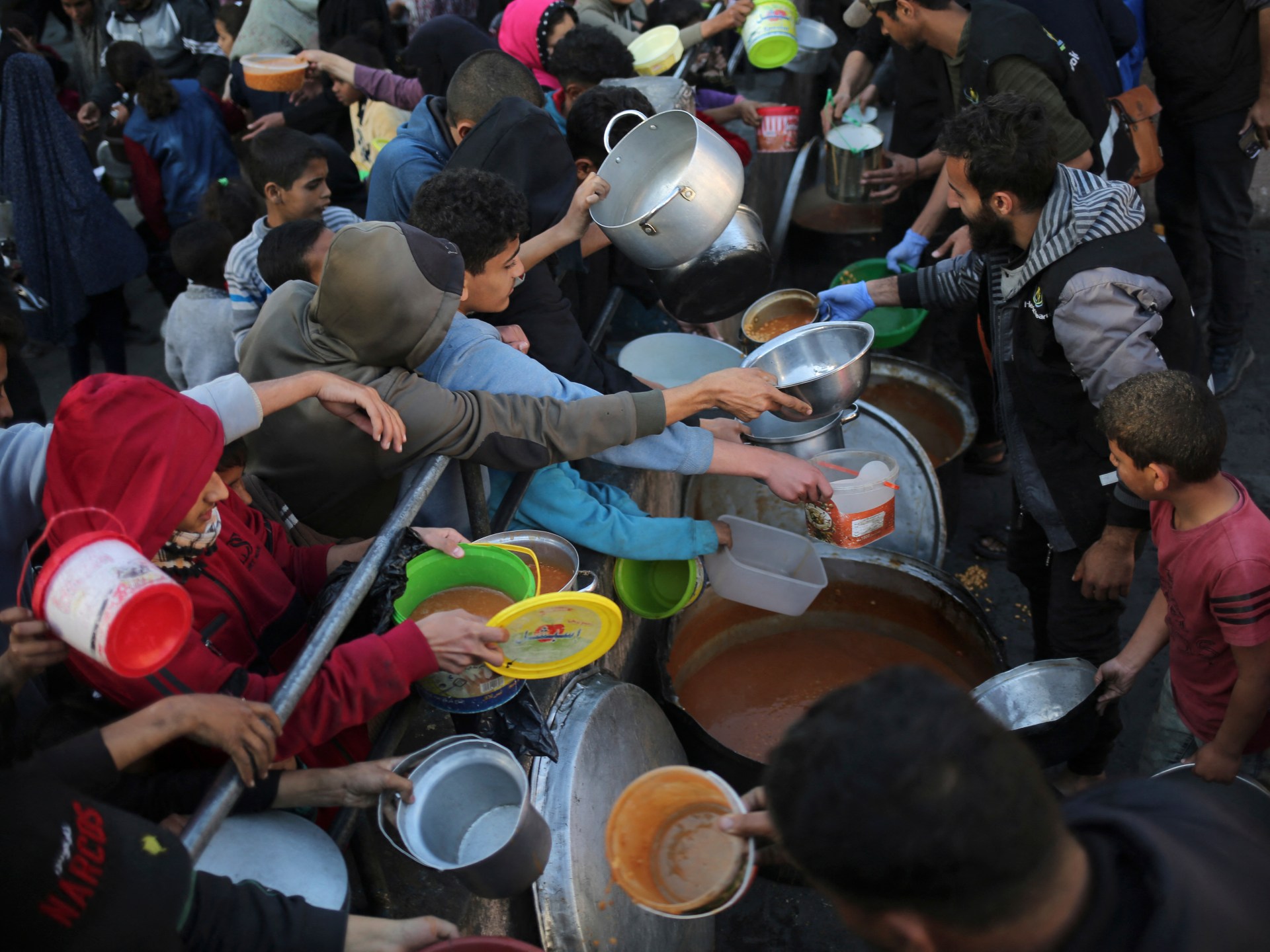G7 to use Russian assets for $50bn Ukraine loan: How will it work? | Russia-Ukraine war News
The G7 group of countries announced a plan on Thursday to use frozen Russian assets to finance a $50bn loan for Ukraine as Kyiv continues its desperate campaign to stop its bigger neighbour’s forces from advancing further, 28 months into Moscow’s war.
The announcement came as leaders of the grouping, which consists of the United States, United Kingdom, Germany, Italy, Canada, Japan, France and the European Union, met at an annual summit held in Puglia (Apulia), Italy.
Ukrainian President Volodymr Zelenskyy, who attended the summit, hailed the move as “a vital step forward in providing sustainable support for Ukraine in winning this war”.
But just hours after that announcement, Russian Foreign Ministry spokeswoman Maria Zakharova promised that there would be “extremely painful” measures in retaliation.
Here’s what we know about the frozen assets, how the loan is expected to work and what the risks might be for Kyiv and its Western allies:
What are the frozen assets?
Many Western nations froze assets of the Russian Central Bank on their territory after Russia’s 2022 invasion of Ukraine. Those assets amount to about $300bn. Those frozen assets have generated some $3bn yearly in earnings through interests, and the US has long pressed for this money to be used to support Ukraine.
Most of the assets are held and managed within the European Union.
EU officials say the interests generated are not contractually owed to Moscow, and therefore represent unexpected gains for the holding countries. Some have pushed for Russian assets frozen in the West to themselves be handed over to Ukraine — but that is controversial, and will likely need clearances from courts and could represent a violation of international law. Frozen assets are usually seen as belonging to the owner of those assets — not the country in which they are geographically located.
Where are the frozen Russian assets?
Here’s a breakdown of most overseas Russian assets that were originally frozen in 2022, according to data from the countries’ central banks:
- France ($71bn)
- Japan ($58bn)
- Germany ($55bn)
- US ($38bn)
- UK ($26bn)
- Austria ($17bn)
- Canada ($16bn)
How will the assets be used?
The details are still being hashed out but the basic idea is this: One of the G7 entities – the EU or the US, for example – will take out a $50bn loan on international markets, and provide it upfront to Ukraine.
Then, the interest on that loan will be financed by the profit being generated by the confiscated Russian assets.
Ukraine is expected to use the money to buy weapons, but also to rebuild. A World Bank report in February estimated that the war-ravaged country’s reconstruction costs stand at $486bn over the next 10 years.
When will Ukraine get this loan?
The funds are expected to reach Kyiv by the end of the year. This means that it might not have an immediate effect on Ukraine’s capabilities in the ongoing war.
But the loan was always intended as a long-term plan. Some experts say US President Joe Biden has pushed for it, even as he has also sealed a new 10-year security plan to train Ukraine’s military, at a politically volatile time in the United States. Former President Donald Trump, who is ahead of Biden in key swing states for their repeat matchup this November, has opposed US funding for Ukraine.
In his first term in office, Trump withdrew the US from key global commitments made by his predecessor, Barack Obama — including the Paris climate change pact and the Iran nuclear deal.
Are there risks in the funding plan?
Yes. If Russia regains control over its assets, or if those are unfrozen as part of peace negotiations, G7 countries will have to find other ways to repay the loan. If the frozen Russian assets fail to generate the income needed to match the loan interests — because of market fluctuations — G7 nations will again need to find alternative ways to finance the loan repayment.
European Commission chief Ursala von der Leyen told reporters that all G7 countries would contribute to the loan, but details are unclear.
The sanctions on Russian assets in Europe need a European Union vote of approval every year. In theory, a single veto vote from, say, Hungary — an EU member widely seen as soft on Russian President Vladimir Putin — could sabotage the Ukraine loan plans. Hungary blocked a tranche of EU aid to Ukraine earlier this year.
Russia might also hit back against the G7 plan by doing the same — using Western assets in Russia that it froze amid the Ukraine war to compensate for the loss of revenue from its frozen assets in the West.
While Russia does not have access to many assets from Western central banks, it has said that it has the assets of Western companies that were operating there before the war. Russia claims these assets are worth roughly the same as the $300bn in Russian assets frozen in the West.
Check out our Latest News and Follow us at Facebook
Original Source






